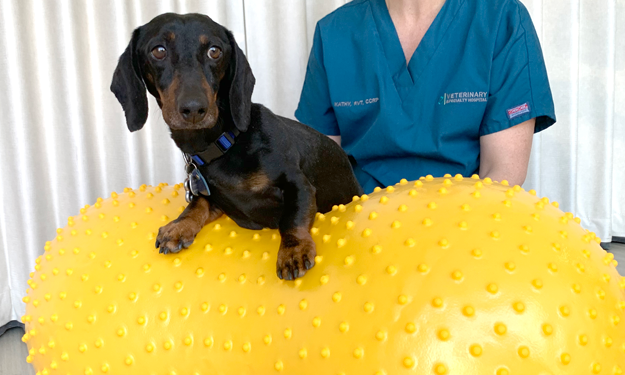Therapeutic Exercise

Therapeutic exercise is at the core of what we do as rehabilitation therapists. Exercise in general has positive effects on the cardiovascular system and causes endogenous release of neurotransmitters in the brain which can mediate pain relief as well as a general state of well-being. We generate a tailored exercise plan for each patient that is dependent on their injury, specific states of compensation, and what stage in the recovery process they are in. This allows us to target weak muscles and strengthen the stabilizing structures around the area of injury, ultimately preventing recurrence and pain.
Examples of therapeutic exercise equipment include Cavaletti rails, Cones, Peanuts, Bosu trainers, stairs, ramps, cushions, and Wobble Boards. Each piece of equipment can be used in a variety of ways to promote strengthening, stability, balance, and proper movement to prevent compensatory pain. Your therapist will also create a home exercise plan to supplement in-hospital exercise so that every day your pet gets a little stronger and a little less painful until graduation day.
Stretching, Joint Mobilization, and Massage
Benefits of Stretching:
- Improves flexibility and extensibility of periarticular tissues
- Improves flexibility and extensibility of muscles and tendons
Benefits of joint mobilization:
- Decreases pain
- Stimulates the production of synovial fluid
- Increases joint motion
- Mimics weight bearing
- We also use many manual techniques such as myofascial release, strain/counter strain, muscle energy, and integrative manual therapy techniques.
Manual Therapy and Massage
Benefits of Manual Therapy, Joint mobilizations, and Massage:
- Improves oxygen supply
- Removal of waste products, which helps to accelerate muscle recovery
- Increases tissue temperature and elasticity
- Increases transport of nutrients to the treatment area
- Relaxes muscular tension
- Reduces swelling and edema
- Reduces pain and inflammation
- Improves functional recovery and decreases delayed onset muscle soreness (DOMS)
- Induces relaxation
- Improves range of motion and flexibility
- Loosens scar tissue
Cavaletti Rails
Cavaletti rails are a series of obstacles set at certain distances apart and at certain heights, both of which are adjusted to match the patient’s capabilities. Cavaletti rails are used to challenge a patient’s balance, improve functional range of motion, improve weight shifting, and normalize gait.
Balance/Wobble Board
A balance board is a flat surface with good traction on which your dog or cat will stand while the board tips. This challenges your pet’s balance and activates the muscles of the body to maintain a standing position while the surface they are standing on is moving. To understand how it works, imagine standing on a moving boat or train without holding on to anything.
Physioballs
Physioballs provide a highly mobile surface upon which to stand as well as a flexible surface requiring balance.
Physioballs allow us to challenge our patients (especially neurological patients) with an unstable surface and a surface (sand is also a surface). Depending upon the condition, a dog or cat who cannot stand may be placed on its own over a peanut-shaped ball which allows the patient to be in his/her normal upright standing position for the first time in days. For these dogs, it is an immediate spirit pick up, and it allows us to provide them with some weight bearing and weight shifting.
With other patients, we may have them standing on a ball (with a physical therapist or technician protecting them) to challenge their coordination and balance.